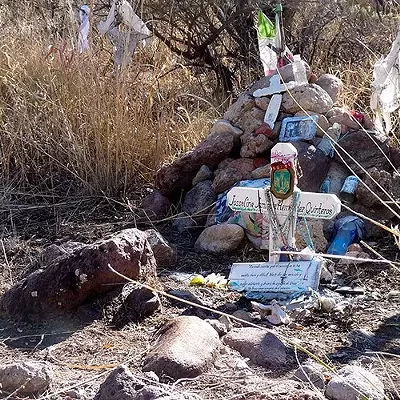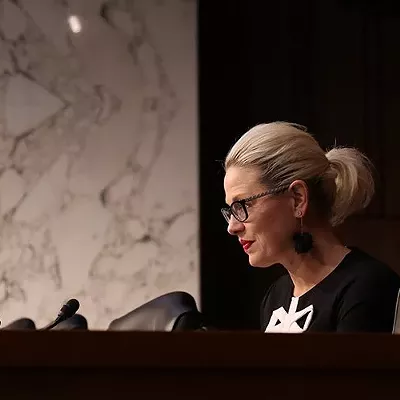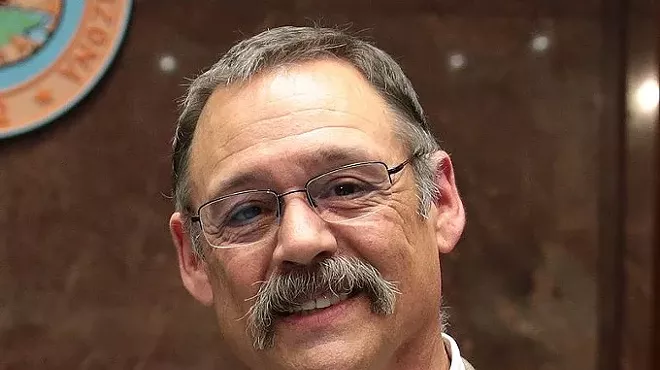Friday, October 23, 2015
Report: Immigration and Customs Enforcement Ignores Detainees' Abuse Allegations, Pretty Much Investigates Itself
(Story updated to include ICE's statement and other information from the agency.)
Tanya Guzman, a transgender woman who was imprisoned in an all-male pod at Immigration and Customs Enforcement's Eloy Detention Center, was sexually assaulted in 2009 by a guard who was later convicted. After that event, and even though Guzman repeatedly complained about the harassment and abuse she endured, the detention center did not transfer her to an all-female facility. She was assaulted again in 2010, this time by a detainee.
It took some time, but the asylum-seeker finally reported the events to the police. She hadn't done so earlier because she feared retaliation. She was released from ICE custody shortly after she filed her complaint. Two years later, the American Civil Liberties Union of Arizona filed a lawsuit on behalf of Guzman against ICE, Corrections Corporation of America and the city of Eloy.
(Read about Guatemalan transgender woman Nicoll Hernandez-Polanco, who also endured severe harassment and assaults in an all-male facility in Florence.)
Four years ago was the first time ICE's Eloy Detention Center was found in compliance with sexual assault prevention and intervention standards. And it might have been because in the 14 months prior to that inspection, there were two sexual assault cases that were "highly publicized," including Guzman's, according to a new report from the National Immigrant Justice Center and the Detention Watch Network, which also found that ICE hides information from the public, and pretty much investigates itself when it comes to allegations of human rights violations from detainees.
The report is the compilation of five years worth—between 2007 and 2012— of inspection documents from a handful of major detention centers, obtained by the NIJC and DWN thanks to a Freedom of Information Act request and litigation. (The authors note that the documents were not willingly released by the Department of Homeland Security. If it hadn't been for the FOIA request, and a federal court order after three years of litigation, this information would have remained in the dark.)
ICE issued this statement, “U.S. Immigration and Customs Enforcement will review this report. ICE remains committed to ensuring that all individuals in our custody are held and treated in a safe, secure and humane manner, and that they have access to legal counsel, visitation, recreation, and quality medical, mental health and dental care.”
The agency says in an email that in 2009, ICE implemented "a major effort" to improve management and oversight of detention facilities. ICE created the Office of Detention Oversight, which conducts facility audits and investigate allegations. Those reviews are independent from the annual inspections, the statement says. "This enhances investigative and inspection capabilities and ensures more immediate access to facilities, especially those located in Texas and Arizona that are close to large populations of ICE detainees."
There's also an onsite compliance program made up of more than 40 federal detention site monitors at ICE's major detention facilities. They oversee facilities to ensure they comply with ICE's detention standards, and report and respond to any issues. Oftentimes, those problems are fixed immediately, the statement says.
"In other instances...ICE...implements remedial plans, and ensures corrective actions are taken to address deficiencies identified by (the Office of Detention Oversight) and by other oversight entities such as the Office of Civil Rights and Civil Liberties and the Department of Homeland Security Inspector General," the statement says.
From the statement:
ICE has created a Detention Monitoring Council, which engages ICE senior leadership to review problems uncovered by the agency’s oversight entities or through other avenues, such as the ICE Detention Reporting and Information Line, where live operators are available to respond to inquiries from ICE detainees and family and community members.Congress' 2009 DHS Appropriations Act
In cases where more serious problems have been identified, ICE leadership can determine whether ICE should discontinue using particular facilities or impose monetary sanctions.
Finally, ICE has centralized detention facility contracts under ICE headquarters supervision to ensure more uniform contracting processes.
ICE has developed a new Intergovernmental Service Agreement template to standardize detention services contracts and to improve compliance with their terms by clearly identifying sanctions associated with non-compliance.
When Congress passed a 2009 Department of Homeland Security appropriations bill, the legislation included a section that said ICE can't fund immigration detention facilities that fail two consecutive inspections.
From the report:
This mandate signaled congressional intent that immigration detention facilities be monitored for adherence to humane standards of detention, and ICE subsequently acknowledged its understanding of this obligation. According to 2010 congressional testimony by former ICE Director John Morton, eight facilities had been closed because they had failed to achieve acceptable ratings.These inspections determine whether or not ICE should keep a facility open or not. Each detention facility is notified of the inspections some time in advance, the report says. Also, facility administrators are able to negotiate their ratings with ICE, according to the report. In 2010 and 2012, no detention centers failed inspections, and merely four failed in 2011. ICE has not failed any facility twice in a row since the 2009 law was established, the report adds.
However, because ICE does not share information publicly about which facilities it uses or contracts with at any given time, it is unknown which facilities Director Morton was referring to or how many additional facilities, if any, have since had contracts terminated on the basis of failure to meet adequate standards.
This lack of transparency makes it difficult for taxpayers or members of Congress to ascertain whether ICE is indeed adhering to the intent encompassed in the Appropriations Act language. Further, passing ratings based on cursory checklists cannot be what Congress intended as a condition for expending taxpayer money to subsidize the detention of immigrants.
"Public and private contractors who run detention facilities continue to make money without adequate oversight, and troubling conditions of detention persist for the more than 400,000 individuals who pass through ICE custody each year," the report says. In any given night, about 34,000 immigrants are in ICE's custody. "In fact, detailed reviews of six facilities known to have troubling human rights records suggest that in some cases, ICE inspections allow facilities to obscure severe conditions problems and their inability to protect the rights and lives of detained immigrants."
In the first nine months of this year, ICE reported six deaths in detention centers.
Read the entire report, here.
Tags: immigration and customs enforcement , eloy detention center , National Immigrant Justice Center , Detention Watch Network , immigration















